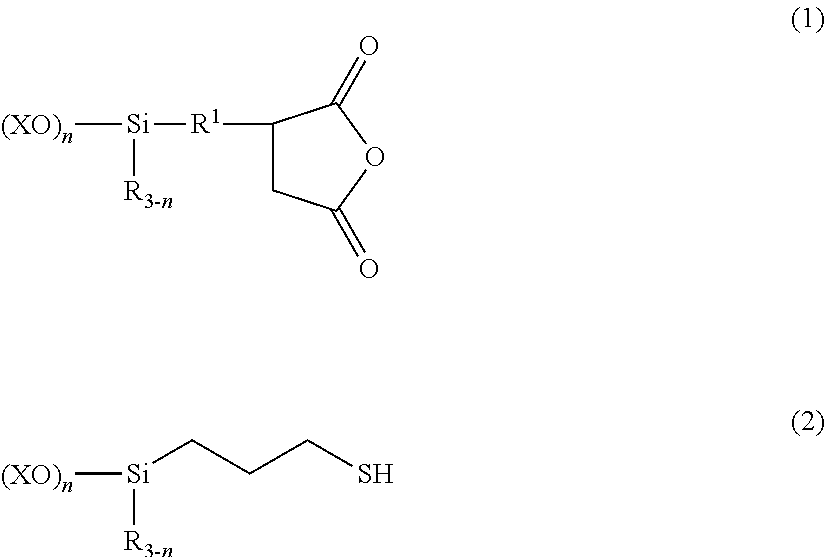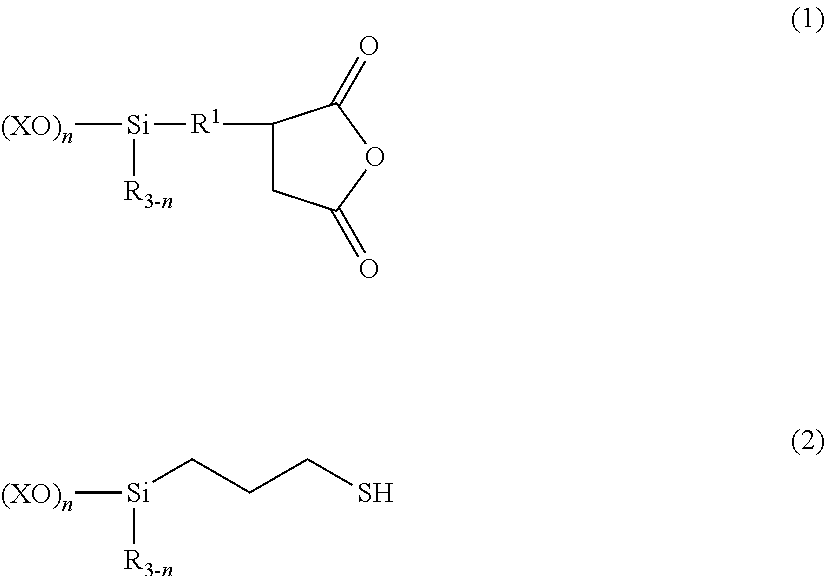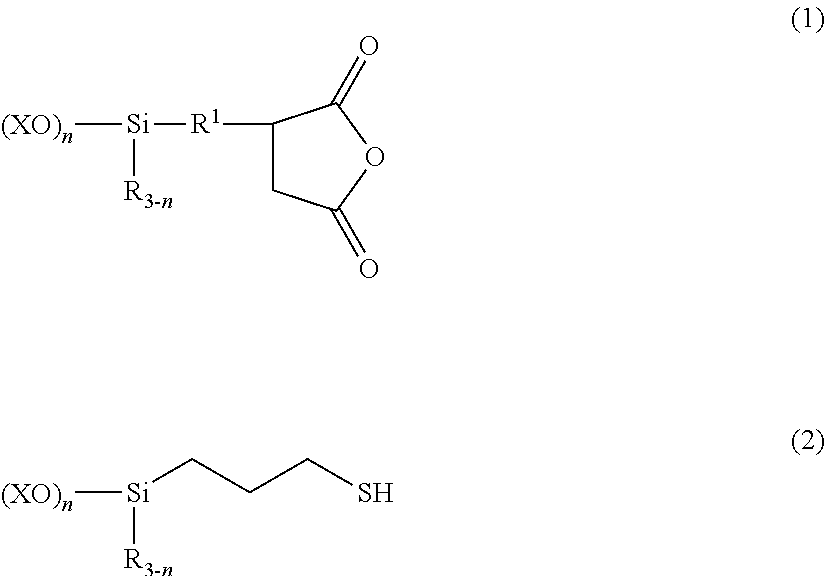Aqueous silane coupling agent composition, making method, and surface treating agent
a technology of aqueous silane and aqueous silane, applied in the field of aqueous silane coupling agent composition, making method, surface treatment agent, can solve the problems of substantial loss of storage stability, molecular weight buildup or gelation, limited application of coating materials to alcohol and organic solvent based systems, etc., to achieve low water solubility, low stability, and high water solubility
- Summary
- Abstract
- Description
- Claims
- Application Information
AI Technical Summary
Benefits of technology
Problems solved by technology
Method used
Image
Examples
example 1
[0069]A 1-L separable flask equipped with a stirrer, reflux condenser, dropping funnel and thermometer was charged with 196.7 parts (0.75 mol) of (trimethoxysilyl)propylsuccinic anhydride (X-12-967C by Shin-Etsu Chemical Co., Ltd.) and 49 parts (0.25 mol) of trimethoxysilylpropylmercaptan (KBM-803 by Shin-Etsu Chemical Co., Ltd.), to which 1,000 parts of deionized water was admitted. The contents were stirred and heated. Methanol formed by reaction and water were distilled off under atmospheric pressure until an internal temperature of about 100° C. was reached. It was confirmed that the fraction distilled off at the time when the internal temperature of 100° C. was reached consisted solely of water, not containing methanol, after which the step of atmospheric heat distillation was interrupted. The total amount of distillates at this point was 500 parts. Deionized water was added to the reaction product to form an aqueous silane coupling agent composition having a solid content of 3...
example 2
[0070]A reaction product was prepared as in Example 1 except that an equimolar amount of (methyldimethoxysilyl)propylsuccinic anhydride was used instead of (trimethoxysilyl)propylsuccinic anhydride. Deionized water was added to the reaction product to form an aqueous silane coupling agent composition having a solid content of 30 wt %, which was a pale yellow clear liquid having a viscosity of 10.4 mm2 / s, a specific gravity of 1.06, a refractive index of 1.374, pH 1.9, and a methanol content of less than 0.1 wt %.
PUM
| Property | Measurement | Unit |
|---|---|---|
| time | aaaaa | aaaaa |
| time | aaaaa | aaaaa |
| temperature | aaaaa | aaaaa |
Abstract
Description
Claims
Application Information
 Login to View More
Login to View More - R&D
- Intellectual Property
- Life Sciences
- Materials
- Tech Scout
- Unparalleled Data Quality
- Higher Quality Content
- 60% Fewer Hallucinations
Browse by: Latest US Patents, China's latest patents, Technical Efficacy Thesaurus, Application Domain, Technology Topic, Popular Technical Reports.
© 2025 PatSnap. All rights reserved.Legal|Privacy policy|Modern Slavery Act Transparency Statement|Sitemap|About US| Contact US: help@patsnap.com



